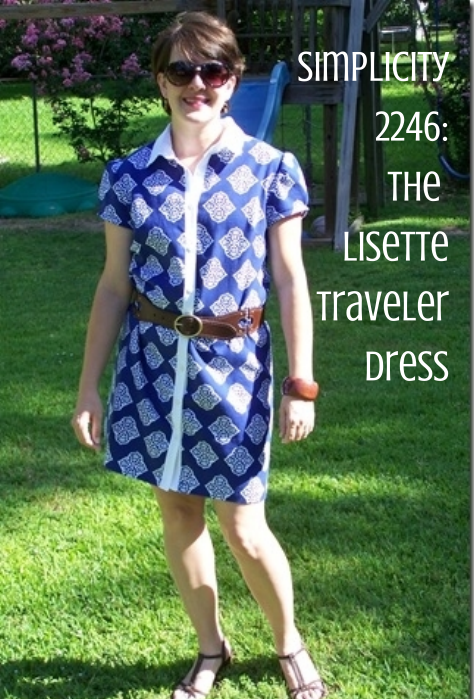All posts by Salinda
Happy 4th of July!
Nuts and Bolts, 2: Finishing your seams
***This is an installment in my series for beginners. The information included is very basic, but quite helpful if you are learning to sew.***
Did you notice that your raw edges of your seam allowances are starting to ravel? Wearing, using, washing and drying garments could make that ravel much, much worse. To prevent a big tangled mess of ravels and strings, you need to finish your seam allowance.
I teach beginners 3 different ways to finish seams. There are several more, but unless you have a serger, a machine with with an overlock stitch, or a desire for Hong Kong finishes, these will get the job done.
The quickest and easiest way to take care of raw edges: pinking shears. Trimming your seam allowance with pinking shears won’t completely eliminate raveling, it will minimize it.
Look for a picture tutorial for zig-zaging your edges and French seams in the next few days.
Nuts and Bolts, 1: What is a seam?
***This is the first installment in my series for beginners. The information included is very basic, but quite helpful if you are learning to sew.***
What is a Seam? A seam is the stitching holding 2 or more pieces of fabric together. This is a seam:
To start your seam, match your 2 pieces of fabric together. Line the raw edges up with a marking on your foot plate. How do you know which ruler to use? That depends on what your pattern tells you to do. Commercial patterns like McCalls, Simplicity, Butterick and Vogue usually call for a 5/8 inch seam allowance. (A seam allowance is the space between your seam and your raw edges. It allows for raveling, fitting changes, alterations, etc.) That means that you need to line the raw edges of your fabric up to the 5/8-inch line on your foot plate. Your needle will now stitch a seam 5/8-inch from the raw edge of the fabric.
You can secure a seam by backstitching. In other words, you sew back on top of your seam to make it secure and keep it from coming “unstitched”. Start your stitch by sewing two or three stitches. Then, hold down the reverse (backstitch) lever or button on your machine and stitch backwards two or three stitches. Let up on the button and sew forward. You repeat these back stitches for two or three stitches at the end of your seam. When do you need to backstitch? Anytime you want a secure seam.
The question I hear most often from beginners is: “How do you know which stitch to use?” Basic seams require your needle in the center position and a stitch length of about 2.5 mm. You can use your sewing machine manual to learn how to change your machine to these settings.
The Lisette Traveler Dress
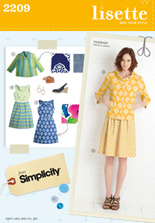
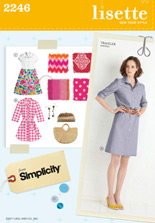
- I didn’t want to match the patterns on the pockets, so I left them off.
- I didn’t want to match the patterns for the button plackets, so I choose to make them in a contrasting white instead.
- I cut out the wrong sleeve pattern by mistake. Rather than cut the right one, I just ran with what I had. The biggest difference: the sleeve for view C was designed to be gathered and a sleeve band added. I didn’t want that, so I just did a little pleat to take out some of the extra instead.
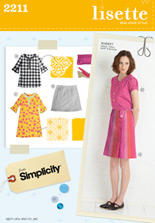
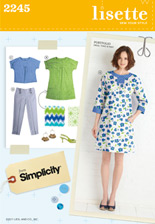
Those Zig Zag Scissors
These scissors are actually called “pinking shears”.
The sawtooth blade creates a “zig zag” cut.
Why would you want to add a pair of pinking shears to your sewing box?
Woven fabrics fray. Many times, they fray A LOT. Cutting raw edges with pinking shears won’t prevent all this fraying, but it will limit the length of the threads that fray. So, having a pair of pinking shears is handy for trim seam allowances and preparing the edges of some fabrics before your wash them.





